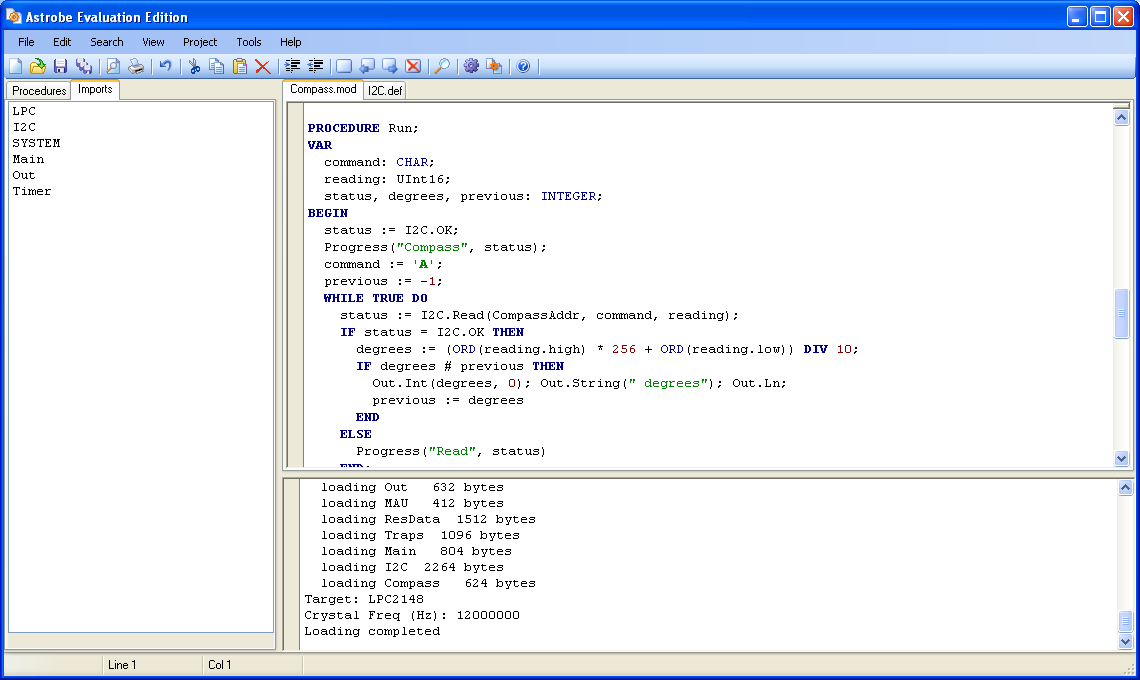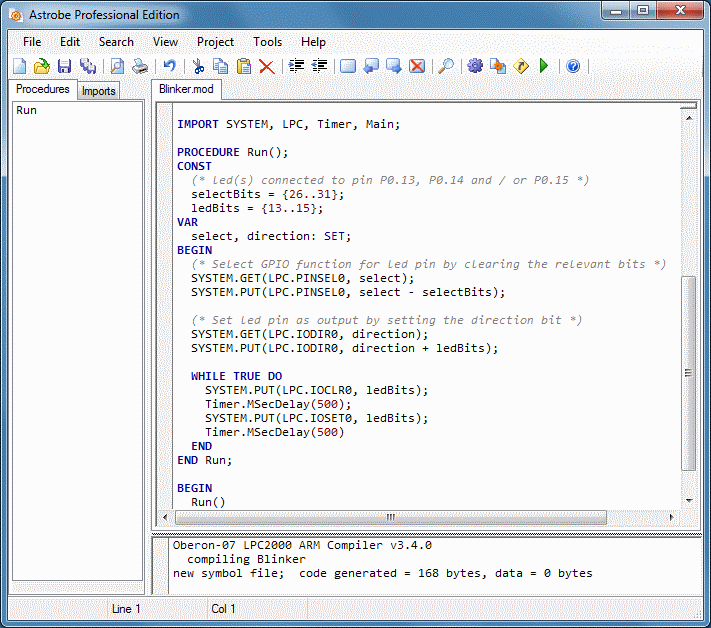
- #OBERON SYSTEM LINES OF CODE SERIAL#
- #OBERON SYSTEM LINES OF CODE SOFTWARE#
- #OBERON SYSTEM LINES OF CODE CODE#
- #OBERON SYSTEM LINES OF CODE PC#
- #OBERON SYSTEM LINES OF CODE WINDOWS#
Standard layout displays two vertical tracks with an unlimited number of viewers. The Kernel module includes disk-store management and a garbage collector. Most text editing commands are called by ordinary mouse clicks, in which the left button serves the caret, marking the current position in the text, and the right button is responsible for highlighting the text. If M is not available, it is automatically loaded. An action is called by clicking the middle mouse button on the text of the form “MP” in any display, where P is the name of the procedure declared in the module M.
#OBERON SYSTEM LINES OF CODE SOFTWARE#
The OS software includes a kernel that includes a memory allocator with a garbage collector, a file system with a bootloader, a text system, a viewer system, and a text editor.Ī module called “Oberon” is the central task manager, and “System” is the basic command module. The RISC5Top module also contains a millisecond counter.
#OBERON SYSTEM LINES OF CODE SERIAL#
In addition, there are serial asynchronous RS-232 cables and a multi-purpose 8-bit parallel I / O interface. The keyboard and mouse are connected via the standard PS-2 serial interface.

Access to the SD-card, which replaced 80 megabytes from the original system, is carried out via the standard SPI interface, which accepts and serializes bytes or 32-bit words. I mapped a black-and-white VGA display into memory so that it occupies 1024 x 768 x 1 bit per pixel = 98.304 bytes, essentially 10 percent of all available memory in 1 megabyte. System diagram with Verilog modules.Ĭontains the following Verilog modules (the number of lines of each module is shown): RISC5 is imported from the RISC5Top context containing the interfaces for various devices mapped to memory and SRAM (256 MB x 32 bits). The processor processes 20 instructions: four for moving, shifting and rotating four for logical operations four for integer arithmetic four for floating point calculations two for memory access and two for branching.
#OBERON SYSTEM LINES OF CODE PC#
The processor is represented by the RISC5 Verilog module and consists of an arithmetic logic unit (ALU), an array of sixteen 32-bit registers, and a control module with an IR instruction register and a PC program counter (see more details - approx. It contains instructions, an image of the file system for the SD card and bit configuration files for the FPGA (in the form of PROM files for the flash memory of the Spartan-3 board), design parts for the hardware interface of the SD card and mouse. A separate S3RISCinstall.zip file is also available there.

#OBERON SYSTEM LINES OF CODE CODE#
The book and the source code of the entire system are available on the website. All my hardware improvements concerned the mouse interface and the SD card, which replaces the hard drive in the old system. The new RISC processor is implemented on a low-cost Digilent Spartan®-3 board with a single-megabyte static memory module (SRAM). Moreover, the choice of Xilinx® FPGA gave me the opportunity to remake the system without deviating much from the original project of 1990. This idea was realized thanks to the modern PPVM chip (user programmable gate array, FPGA), which allowed me to create hardware just like creating a software system. But in the course of a little research, I could not find a processor that fully meets my criteria of clarity, regularity and simplicity. So I decided to rewrite the compiler for the modern processor.

The original compiler was created for a processor that has already disappeared from the market. The book, entitled "Project Oberon", included the source code of the system.Ī few years later, my friend Paul Reed suggested I publish a reprint of the book, due to its importance for studying system architecture and giving a good starting point for those who want to build reliable systems from scratch. Then we published a book revealing the details of both the Oberon compiler and the OS of the same name.
#OBERON SYSTEM LINES OF CODE WINDOWS#
Not stopping there, in 1990 we built a modern operating system (OS) Oberon for workstations, using windows and word processing capabilities. The Oberon language was originally designed by us as being more rational and effective than Modula-2, which made it easier for students of the academic education system to master computer science. In 1988, Jurg Gutknecht and I completed and published the programming language Oberon, which was the successor to two other languages, Pascal and Modula-2, which I had previously developed. Swiss Federal Institute of Technology (ETH)


 0 kommentar(er)
0 kommentar(er)
